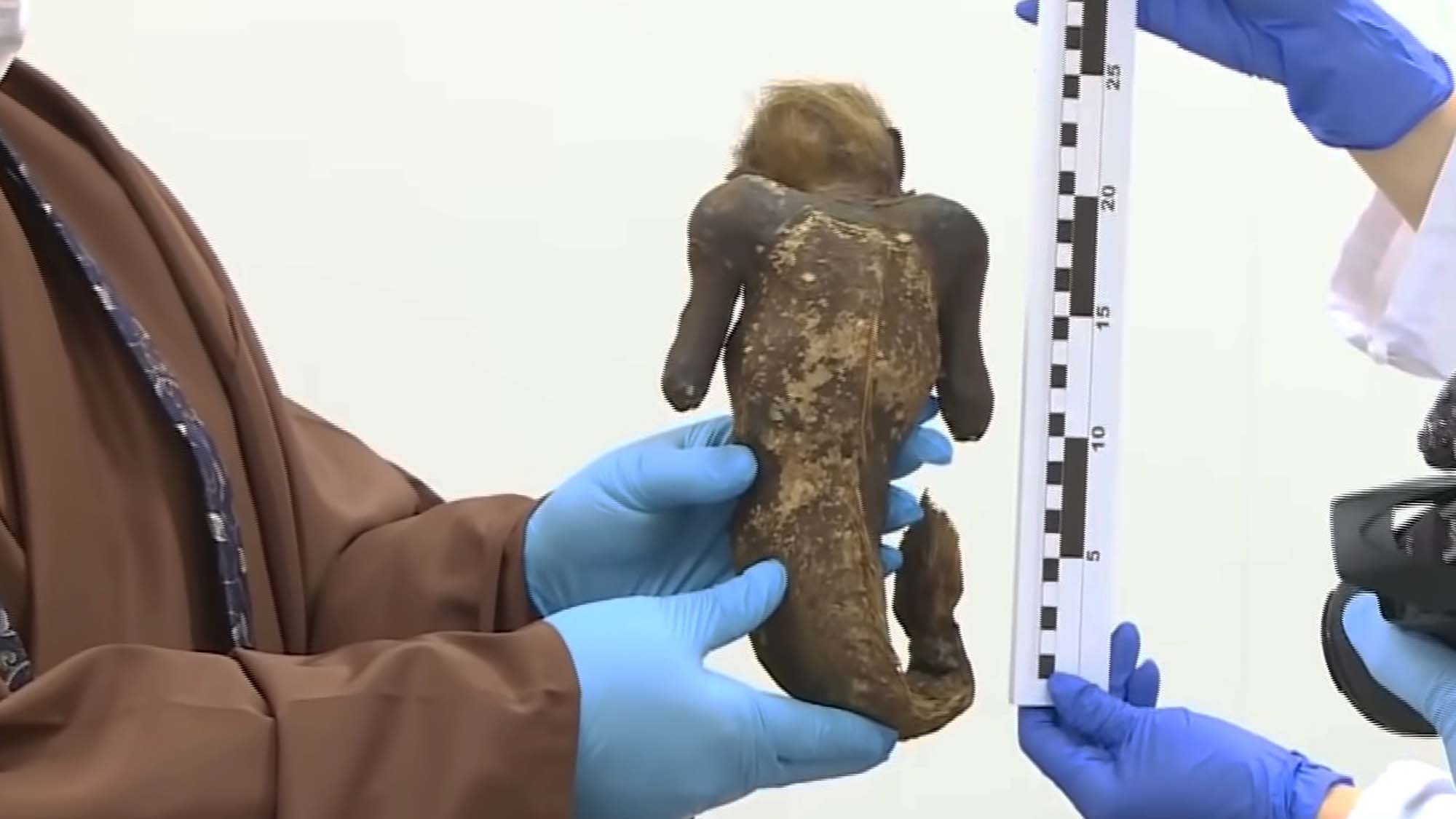Experts in Japan have said that what was long thought to be a mummified mermaid is in fact fake after studying it for a year.
The “Mermaid Mummy” is owned by Enju-in Temple in Asakuchi City, Japan, and is said to have been pulled out of the sea by a fisherman nearly 300 years ago.
The scary-looking 300-year-old mummy appears to be frozen in a scream while holding its hands to its mouth.
Believers are said to have eaten the scales from mummified “mermaids” in the hope of achieving immortality.
Unlike Western representations of mermaids, Japanese mermaids, called Ningyo, look quite different and are often depicted with almost simian features.

Despite historical documents first mentioning the legendary creatures in the 7th Century AD, the ‘mermaid’ at the Enju-in Temple, said to have been caught near Tosa, which is in present-day Kochi Prefecture, during the Genbun era (1736-1741), has now been revealed to be an elaborate fake.
This is according to experts at the Kurashiki University of Science and the Arts.
The experts began analysing it in February 2022, and it has now been revealed that its upper body, which resembles that of a primate, is in fact made of paper and puffer fish skin.
Cloth, paper, and cotton were found to have been used as filling for the base and the lower half of the body was covered with fish skin.
Based on scales that had fallen off the 30-centimetre ‘mermaid’ and were analysed by the researchers at the Kurashiki University of Science and the Arts, it was likely made in the late 1800s.
As a result, apart from the jaw, there were no major skeletons such as the head, spine and ribs. The head was made mostly of cotton, partially trimmed with something like plaster or gypsum.
The body surface of the upper body was layered with thin paper, and the epidermis of pufferfish and animal hair was glued together.

The lower half of the body has a tail fin and a dorsal fin, and it was found to have the characteristics of croaker fish.
Newsflash obtained a statement from the university on 7th February saying: “In order to investigate the materials, preservation, and historical background of the ‘mermaid mummies’ in the collection of the religious corporation Enju-in, with the cooperation of the temple’s chief priest Hiroyoshi Kuda, Kurashiki University of Science and the Arts, Okayama Folklore Hiroshi Kinoshita, Director of the Society, conducted a survey at the Kurashiki City Museum of Natural History.
“The investigation began on 2nd February 2022, with surface observations, X -rays, and X -ray CT scans of the mermaid mummies.
“In addition, observations with an optical microscope and an electron microscope, fluorescent X-ray analysis, DNA analysis, and radiocarbon dating were carried out on the microbes that had fallen from the mermaid’s mummy.
“In addition, we have conducted historical and folklore research on mermaid mummies, so we will report the outline of what we have learned so far.
Hirozen Kuida, 61, the chief priest of Enju-in Temple, admitted at a press conference that people had even turned up to worship the mermaid during the COVID-19 pandemic, “hoping that it would help alleviate the coronavirus pandemic even if only slightly”.
This was purportedly based on the fact that folklore also suggests appearances of mermaids represented an ominous warning that an infectious disease was about to break out.
After it was branded a fake, he said that it would still have a place, saying: “Many people in the area have put their hands together and their thoughts dwell in it, and it is made of living things.

“I understand, and I want to continue to cherish it.”
A little over 10 “mermaid mummies” have been confirmed to exist in Japan.
P. T. Barnum, whose life inspired the 2017 blockbuster The Greatest Showman, exhibited a similar specimen at his American Museum in New York before it burned down in 1865.
His mummy, created from the torso and head of an orangutan sewn onto the back half of a salmon, was purportedly caught off the coast of Fiji and later purchased from Japanese sailors.
To find out more about the author, editor or agency that supplied this story – please click below.
Story By: Joseph Golder, Sub-Editor: Marija Stojkoska, Agency: Newsflash
The Ananova page is created by and dedicated to professional, independent freelance journalists. It is a place for us to showcase our work. When our news is sold to our media partners, we will include the link here.




